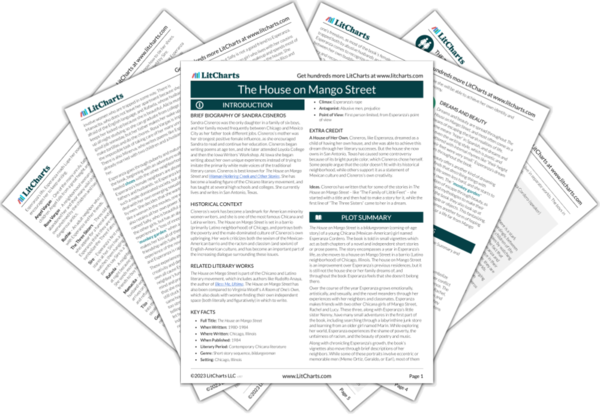Welcome to the LitCharts study guide on Sandra Cisneros's The House on Mango Street. Created by the original team behind SparkNotes, LitCharts are the world's best literature guides.
The House on Mango Street: Introduction
The House on Mango Street: Plot Summary
The House on Mango Street: Detailed Summary & Analysis
The House on Mango Street: Themes
The House on Mango Street: Quotes
The House on Mango Street: Characters
The House on Mango Street: Symbols
The House on Mango Street: Theme Wheel
Brief Biography of Sandra Cisneros

Historical Context of The House on Mango Street
Other Books Related to The House on Mango Street
- Full Title: The House on Mango Street
- When Written: 1980-1984
- Where Written: Chicago, Illinois
- When Published: 1984
- Literary Period: Contemporary Chicana literature
- Genre: Short story sequence, bildungsroman
- Setting: Chicago, Illinois
- Climax: Esperanza’s rape
- Antagonist: Abusive men, prejudice
- Point of View: First person limited, from Esperanza’s point of view
Extra Credit for The House on Mango Street
A House of Her Own. Cisneros, like Esperanza, dreamed as a child of having her own house, and she was able to achieve this dream through her literary successes. But the house she now owns in San Antonio, Texas has caused some controversy because of its bright purple color, which Cisneros chose herself. Some people argue that the color doesn’t fit with its historical neighborhood, while others support it as a statement of Mexican culture and Cisneros’s own creativity.
Ideas. Cisneros has written that for some of the stories in The House on Mango Street – like “The Family of Little Feet” – she started with a title and then had to make a story for it, while the first line of “The Three Sisters” came to her in a dream.












